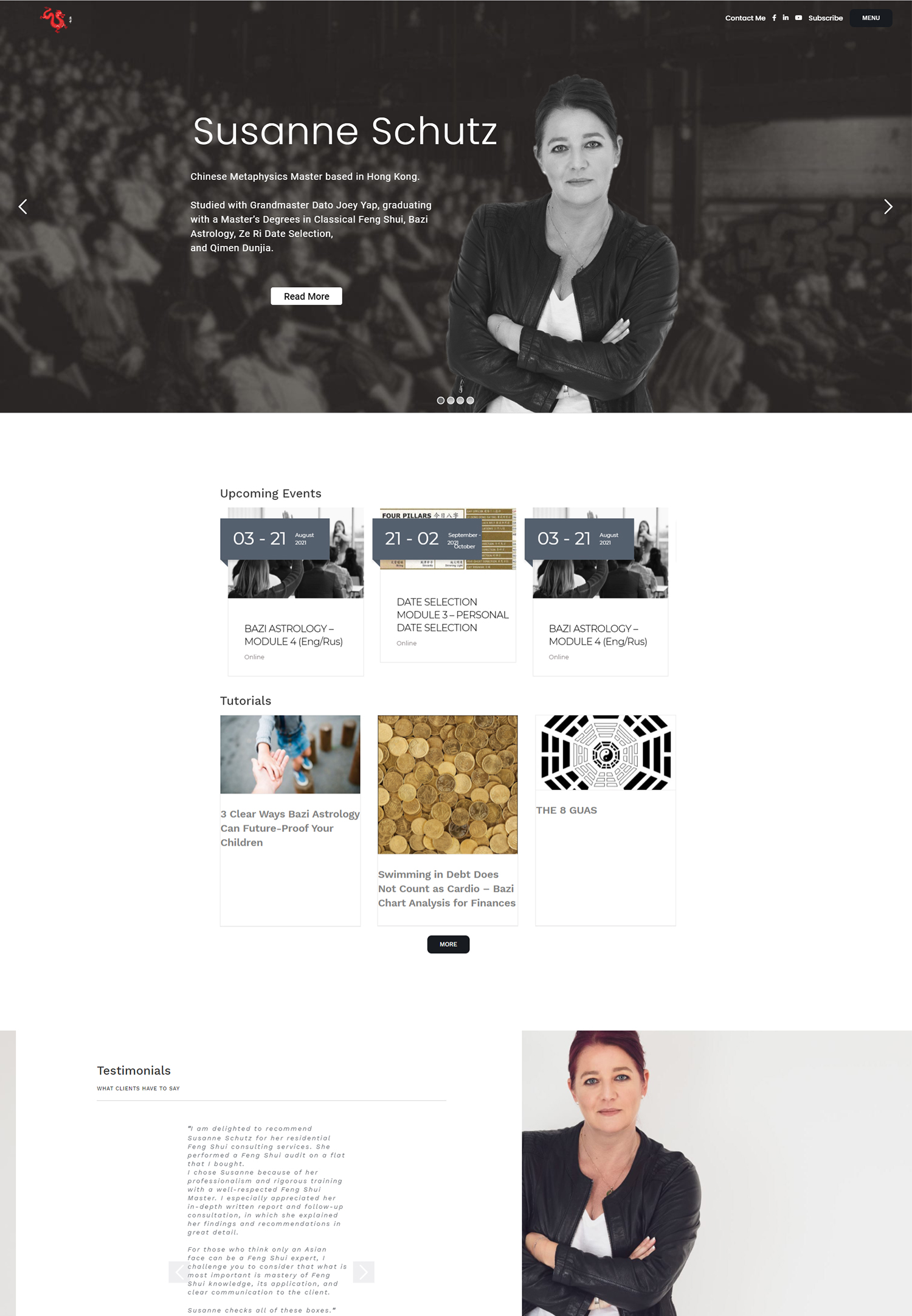A Complete Guide to Mobile-Responsive Design The importance of mobile-responsive design is obvious in a time when mobile devices account for the majority of internet usage. According to Statista, more than 54% of all website traffic worldwide will come from mobile devices by 2023. Businesses must give mobile responsiveness top priority in their web design strategies due to this change in user behavior. Websites that have a mobile-responsive design are guaranteed to adjust fluidly to different screen sizes, offering the best possible viewing experience on any device.
Key Takeaways
- Mobile-responsive design is crucial for providing a seamless user experience across different devices and screen sizes.
- Key elements to consider when designing mobile-responsive landing pages include clear and concise messaging, easy navigation, and fast loading times.
- Best practices for optimizing mobile-responsive landing pages include using responsive images, optimizing for touch, and minimizing the use of pop-ups.
- Creating engaging and user-friendly mobile-responsive landing pages involves using compelling visuals, clear call-to-action buttons, and easy-to-fill forms.
- Mobile-responsive design can have a significant impact on conversion rates by improving user experience and reducing bounce rates.
This flexibility not only improves user satisfaction but is also essential for keeping visitors on your site & lowering bounce rates. Also, mobile-responsive websites have become more and more popular in search engines like Google’s ranking algorithms. Google’s 2015 mobile-friendly update gave preference to mobile-optimized websites in search results.
This implies that companies that disregard mobile responsiveness run the risk of losing clients and visibility. Better search engine rankings, more organic traffic, & eventually higher conversion rates can result from a well-designed mobile-responsive website. Understanding the significance of mobile-responsive design is therefore crucial for any company hoping to succeed in the digital sphere. The process of developing landing pages that are responsive to mobile devices requires careful consideration of a number of important factors. The arrangement comes first.
Making sure that content adapts fluidly to various screen sizes requires a fluid grid layout. With this method, the design can be more adaptable to different devices without sacrificing the user experience. A single column layout for mobile devices should be given top priority by designers since it facilitates user navigation and content consumption. Using touch-friendly buttons and links is another essential component.
Designing buttons that are big enough to tap easily without unintentional clicks is crucial because mobile users rely on touchscreens rather than desktop users who navigate with a mouse. As per Apple’s Human Interface Guidelines, touch targets should have a minimum size of 44×44 pixels. Also, to improve usability and avoid frustration, there should be enough space between clickable elements. By concentrating on these essential components, designers can produce landing pages that are not only aesthetically pleasing but also practical & easy to use.
Combining technical considerations with design strategies is necessary to optimize mobile-responsive landing pages. Loading speed is a recommended practice. Slow-loading webpages can result in high bounce rates because mobile users frequently access websites while on the go. When a website takes more than three seconds to load, 53% of mobile users leave, according to Google.
In order to maximize loading speed, designers should use browser caching, reduce HTTP requests, and compress images. Resources such as Google PageSpeed Insights can offer insightful information about performance and point out areas that need work. Making content easier to consume on mobile devices is another best practice. Presenting information succinctly and clearly is essential due to mobile devices’ small screen real estate.
This can be accomplished by dividing the text with distinct headings, bullet points, and brief paragraphs. Visual aids like pictures or videos can also effectively communicate information while increasing user engagement. Making sure that forms are simple to complete on mobile devices is also crucial; dropdown menus and auto-fill features can greatly enhance the user experience.
It takes careful attention to design and content presentation to create mobile-responsive landing pages that are both interesting & easy to use. Using eye-catching imagery that appeals to the target audience is one practical tip. Compared to text alone, high-quality photos or videos can draw viewers in and deliver messages more successfully. But performance & aesthetics must be balanced; it’s critical to optimize images for quicker loading times. A crucial element is the implementation of unambiguous calls-to-action (CTAs). CTAs should be clearly visible and simple to find on mobile devices, requiring little scrolling or zooming.
To help buttons stand out against the background and attract users’ attention, use contrasting colors. CTAs that use language that is action-oriented, like “Get Started” or “Sign Up Now,” can also persuade users to perform the desired action. Designers can produce landing pages that both draw visitors and encourage conversion by concentrating on these components. Mobile-responsive design has a significant and well-established effect on conversion rates.
Businesses with mobile-optimized websites have substantially higher conversion rates than those without, according to research. According to one Invesp study, for example, responsive websites convert 20% more often than non-responsive ones. This rise is attributable to better user experience; when users can easily navigate a website on their mobile devices, they are more likely to take desired actions, like buying something or subscribing to a newsletter.
Also, users’ credibility & trust are increased by mobile-responsive design. Brand perception can be improved by a mobile-friendly website that conveys professionalism and attention to detail. On the other hand, an unprofessionally designed website may cause annoyance and mistrust of the company. Businesses who invest in mobile-responsive design are better positioned to capture leads & turn them into devoted customers, as consumers increasingly rely on their smartphones for information gathering and shopping. Several typical errors can impair the efficacy and user experience of mobile-responsive landing page design. Ignoring the significance of testing on various devices and browsers is a common mistake.
Because screen sizes and resolutions vary, a design that works well on one device might not work well on another. To guarantee consistent performance, extensive testing across multiple platforms—such as iOS and Android—using various browsers is necessary. Adding too many elements or content to the landing page is another error.
Due to the constrained space on mobile screens, too much information can overwhelm users and take attention away from the main message or call to action. Rather, designers ought to prioritize the most important details & use whitespace to create a clean layout in order to concentrate on simplicity & clarity. Designers can improve the overall efficacy of their mobile-responsive landing pages by steering clear of these typical pitfalls. There are numerous tools and resources available to help designers test and enhance landing pages that are responsive to mobile devices.
Users can determine whether their website satisfies mobile usability standards with Google’s Mobile-Friendly Test, which is a priceless tool. Designers can more easily optimize their websites with the help of this tool, which offers insights into possible problems and recommendations for enhancement. Developers can also test their websites on a variety of devices and browsers without having to physically visit each one thanks to tools like BrowserStack. This feature guarantees that designers can spot compatibility problems at an early stage of the development process.
Businesses can also monitor engagement metrics & make well-informed decisions about design changes based on actual user interactions thanks to analytics tools like Google Analytics, which offer data on user behavior. Analyzing successful case studies can yield insightful information about mobile-responsive design tactics that work. The landing page for Airbnb is a noteworthy example; it has a simple design and big photos that successfully highlight properties. CTAs are clearly visible for convenient access, and the site’s single-column layout makes it easier to navigate on mobile devices.
The landing page for Shopify’s e-commerce platform is another prime example. The design places a high value on speed and ease of use, with little text & obvious calls to action that direct users to register for a free trial. Testimonials are used to maintain an appealing visual style that appeals to potential clients while also adding credibility. Using mobile-responsive design effectively can improve user experience & increase conversions, as demonstrated by these examples.
In order to create more effective landing pages that meet the needs of mobile users, designers can obtain inspiration & best practices from examining successful case studies. In conclusion, understanding the nuances of mobile-responsive design is crucial to developing landing pages that work in the modern digital environment, engage users, & encourage conversions. Businesses may greatly improve their online presence and take advantage of the expanding trend of mobile internet usage by concentrating on important components like layout, loading speed, content optimization, & user-friendly features.
When designing mobile-responsive landing pages, it’s crucial to consider various factors that contribute to an effective design. An excellent resource to further understand these elements is the article “9 Brutal Questions for a Website Design Company” on Populis Digital. This article provides insights into the critical questions you should ask when hiring a design company, ensuring they can meet your mobile responsiveness needs among other design requirements. You can read more about it by visiting 9 Brutal Questions for a Website Design Company. This will help you make informed decisions and achieve a landing page that not only looks good but also performs well on mobile devices.




























